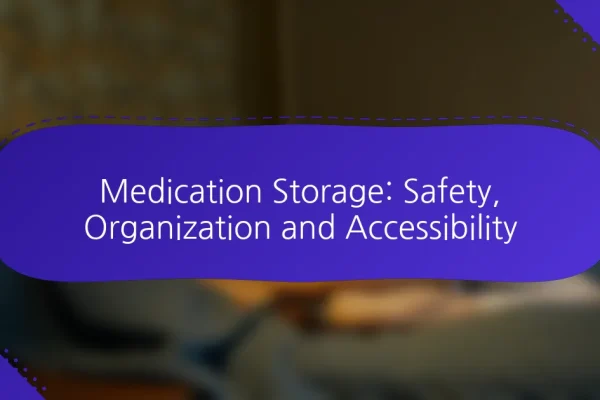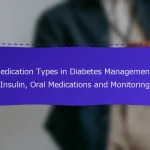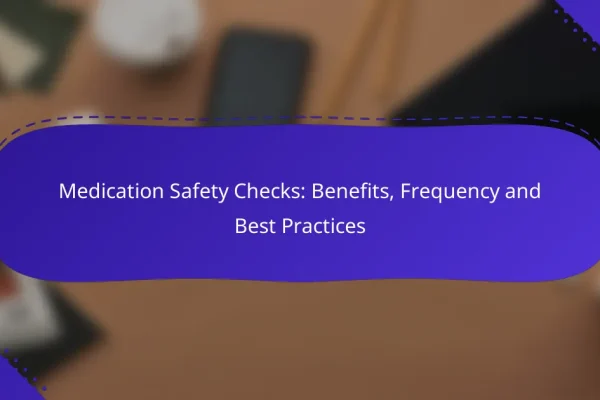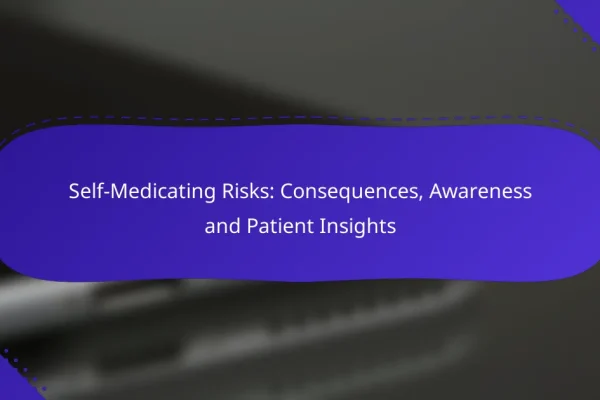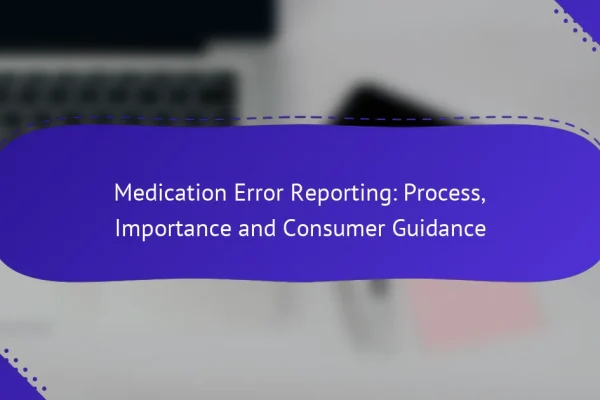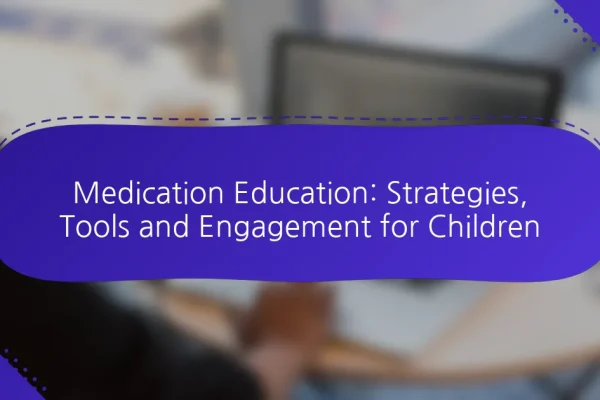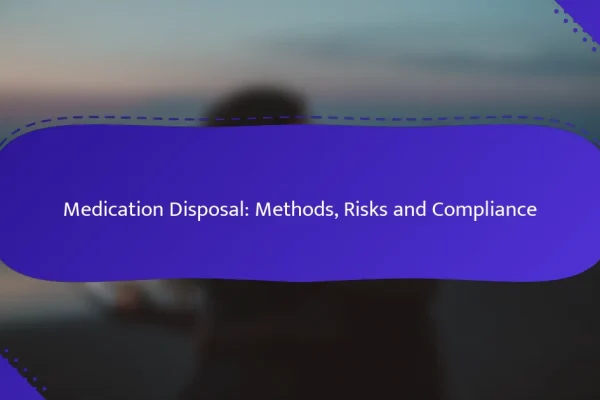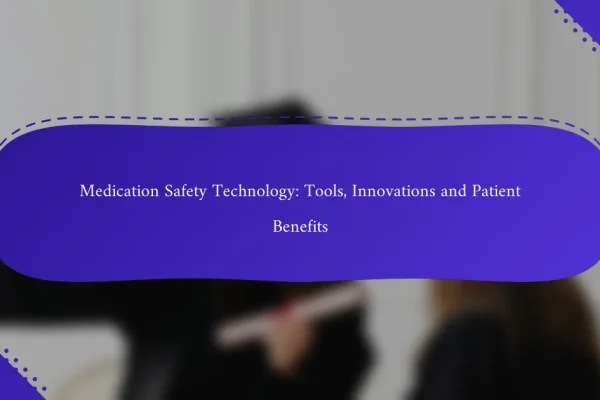What are the best practices for medication safety in Spain?
The best practices for medication safety in Spain involve regular medication reviews, clear labeling and instructions, and patient education programs. These practices help prevent medication errors and ensure that patients use their medications safely and effectively.
Regular medication reviews
Regular medication reviews are essential for ensuring medication safety. These reviews typically involve healthcare professionals evaluating a patient’s current medications to identify any potential issues, such as drug interactions or unnecessary prescriptions.
In Spain, it is recommended that patients have their medications reviewed at least once a year or whenever there is a significant change in their health status. This proactive approach helps to minimize risks associated with polypharmacy, especially in older adults.
Clear labeling and instructions
Clear labeling and instructions are crucial for medication safety. Labels should include the medication name, dosage, frequency, and any specific instructions, such as whether to take it with food or on an empty stomach.
In Spain, pharmacies are required to provide labels in Spanish, and additional languages may be offered in areas with significant non-Spanish speaking populations. Patients should always read labels carefully and consult their healthcare provider if they have any questions.
Patient education programs
Patient education programs play a vital role in promoting medication safety. These programs aim to inform patients about their medications, including how to take them correctly and the importance of adherence to prescribed regimens.
In Spain, healthcare providers often conduct workshops or one-on-one sessions to educate patients. Patients are encouraged to ask questions and express any concerns about their medications, which can help prevent misunderstandings and improve overall health outcomes.
How can technology enhance medication safety?
Technology can significantly improve medication safety by reducing errors and enhancing communication among healthcare providers. Tools like electronic health records and medication management apps streamline processes and provide critical information at the point of care.
Electronic health records
Electronic health records (EHRs) centralize patient information, making it easily accessible to healthcare professionals. This accessibility helps prevent medication errors by ensuring that providers have up-to-date information on allergies, current medications, and medical history.
When using EHRs, it’s essential to ensure that the system is user-friendly and compliant with local regulations, such as the General Data Protection Regulation (GDPR) in Europe. Regular training for staff on EHR functionalities can also enhance their effectiveness.
Medication management apps
Medication management apps assist patients in tracking their prescriptions, dosages, and schedules. These applications often include reminders and alerts to help users take their medications on time, reducing the likelihood of missed doses.
When selecting a medication management app, consider features like integration with EHRs, user reviews, and data security measures. It’s advisable to choose apps that comply with local health regulations and are recommended by healthcare professionals to ensure reliability.
What are common medication errors to avoid?
Common medication errors include dosage mistakes, drug interactions, and miscommunication with healthcare providers. Recognizing these pitfalls can significantly enhance medication safety and patient health outcomes.
Dosage mistakes
Dosage mistakes occur when patients take too much or too little of a medication. This can happen due to misreading labels, misunderstanding instructions, or using the wrong measuring device. Always double-check the prescribed dosage and consult a pharmacist if uncertain.
For example, liquid medications should be measured with a syringe or measuring cup, not a household spoon, to ensure accuracy. If a dose is missed, follow the healthcare provider’s advice on whether to take it as soon as remembered or skip it entirely.
Drug interactions
Drug interactions happen when one medication affects the effectiveness or side effects of another. This can lead to increased toxicity or reduced therapeutic effects. Patients should inform their healthcare providers about all medications, including over-the-counter drugs and supplements.
For instance, certain antibiotics can interact negatively with blood thinners, increasing the risk of bleeding. Always review potential interactions with a healthcare professional before starting a new medication.
Miscommunication with healthcare providers
Miscommunication with healthcare providers can lead to incorrect prescriptions or misunderstandings about medication use. It’s essential for patients to ask questions and clarify any doubts regarding their treatment plans. Keeping a list of all medications and dosages can help facilitate these discussions.
For effective communication, patients should not hesitate to express concerns about side effects or difficulties in following the prescribed regimen. This proactive approach can prevent errors and enhance overall treatment effectiveness.
What role does patient involvement play in medication safety?
Patient involvement is crucial for ensuring medication safety, as it empowers individuals to take an active role in their treatment. Engaging patients in their healthcare decisions helps to minimize errors and enhances the effectiveness of prescribed medications.
Active participation in treatment plans
Active participation in treatment plans means that patients should engage with healthcare providers to discuss their medications, understand their purposes, and clarify any concerns. This collaboration can lead to better adherence to prescribed regimens and a greater awareness of potential interactions with other treatments.
Patients can ask questions about dosages, timing, and side effects, which helps to tailor the treatment to their specific needs. For example, if a patient is aware of their medication schedule, they are less likely to miss doses, thereby improving overall safety and efficacy.
Reporting side effects
Reporting side effects is essential for medication safety, as it allows healthcare providers to monitor the effects of treatments and make necessary adjustments. Patients should be encouraged to communicate any adverse reactions they experience, no matter how minor they may seem.
To facilitate this, patients can keep a simple log of their medications and any side effects, noting the timing and severity. This information can help healthcare professionals make informed decisions about continuing, adjusting, or switching medications to ensure the patient’s safety and well-being.
How can healthcare professionals ensure medication safety?
Healthcare professionals can ensure medication safety by adhering to established protocols and continuously updating their knowledge. This involves regular training, implementing safety measures, and fostering a culture of communication among staff.
Continuous training and education
Continuous training and education are essential for healthcare professionals to stay informed about the latest medication practices and safety standards. Regular workshops and seminars can help staff understand new medications, potential side effects, and best practices for administration.
Additionally, utilizing online courses and certification programs can provide flexible learning opportunities. Professionals should aim to complete at least one training session every year to keep their skills sharp and knowledge current.
Implementing safety protocols
Implementing safety protocols is crucial for minimizing medication errors. This includes standardized procedures for prescribing, dispensing, and administering medications. For example, using electronic health records can reduce the risk of miscommunication and ensure accurate medication histories.
Healthcare facilities should establish clear protocols for double-checking dosages and verifying patient identities before administration. Regular audits and feedback sessions can help identify areas for improvement and reinforce adherence to these safety measures.
What are the regulatory frameworks for medication safety in Spain?
In Spain, medication safety is governed by a combination of European Union regulations and national laws. These frameworks ensure that medicines are safe, effective, and of high quality throughout their lifecycle.
European Medicines Agency guidelines
The European Medicines Agency (EMA) establishes guidelines that all EU member states, including Spain, must follow to ensure medication safety. These guidelines cover the entire process from drug development to post-marketing surveillance, emphasizing the need for rigorous testing and monitoring.
Key principles include the requirement for clinical trials to demonstrate safety and efficacy before approval. Additionally, the EMA mandates ongoing safety assessments, which can lead to updates in medication guidelines based on new data.
Spanish Agency of Medicines and Medical Devices regulations
The Spanish Agency of Medicines and Medical Devices (AEMPS) is responsible for implementing EMA guidelines at the national level. AEMPS oversees the approval process for new medications, ensuring compliance with both European and Spanish laws.
AEMPS also conducts inspections and monitors adverse drug reactions to maintain high safety standards. Healthcare professionals and patients are encouraged to report any side effects, which helps the agency take necessary actions, such as issuing warnings or withdrawing products from the market.
What emerging trends are shaping medication safety practices?
Emerging trends in medication safety practices focus on integrating technology and personalized approaches to enhance patient care. These innovations aim to reduce medication errors and improve adherence through better management and communication.
Artificial intelligence in medication management
Artificial intelligence (AI) is transforming medication management by analyzing patient data to predict potential adverse drug interactions and recommend safer alternatives. AI algorithms can process vast amounts of information quickly, helping healthcare providers make informed decisions about prescriptions.
For example, AI tools can flag potential issues in real-time during the prescribing process, reducing the likelihood of errors. This technology also assists in monitoring patient adherence by analyzing refill patterns and alerting providers when patients miss doses.
Telehealth consultations for medication reviews
Telehealth consultations are becoming a vital part of medication safety by allowing healthcare providers to conduct medication reviews remotely. This approach increases accessibility for patients, especially those in rural areas or with mobility challenges.
During a telehealth session, providers can discuss medication regimens, assess side effects, and make necessary adjustments. It is essential for patients to prepare for these consultations by having a list of all medications, including over-the-counter drugs and supplements, to ensure comprehensive reviews.
Personalized medicine approaches
Personalized medicine tailors treatment plans based on individual patient characteristics, such as genetics, lifestyle, and health history. This approach enhances medication safety by ensuring that prescribed therapies are more effective and have a lower risk of adverse effects.
For instance, pharmacogenomics can identify how a patient’s genetic makeup affects their response to specific medications, allowing for more precise dosing. Patients should engage with their healthcare providers to explore personalized options that suit their unique profiles, improving overall treatment outcomes.
